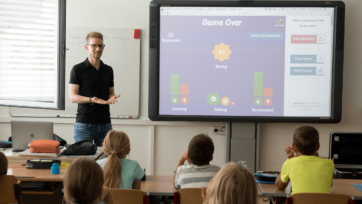Teaching STEAM skills through the Primary Industries
Teaching STEAM skills through the Primary Industries
STEAM has become a huge buzzword of recent times, and the skills involved are highly prized for development by teachers and society, with most people, whether they work in the sector or not, knowing what each letter stands for:
S – Science
T – Technologies
E – Engineering
A – Arts
M – Mathematics
You may be thinking, however, ‘how does Arts fit in with the other subjects?’ Traditionally there’s been a divide between the creativity of Arts-based subjects and the logical, problem-solving left-brained sciences, but this is slowly being reconciled through the lens of skills-based education. We now know that creativity is a key skill that the next generation will need to develop, in order to work in a world that values creative solutions to problems and out-of-the-box thinking, hence the inclusion of Arts in the STEAM subjects.
What has this got to do with Primary Industries?
Interestingly, Ag-learning, including food and fibre education and the paddock to plate journey, is the perfect vehicle for delivering and developing the STEAM skills. Australia is a world leader in innovative agriculture and many schools are already implementing primary industry education into the curriculum with resources such as school veggie gardens, on-site chickens and even beehives (check out the K-12 bee program at Barker College). However, the PIEFA Food, Fibre and Our Future report, conducted in 2020, revealed that students’ understanding of food and fibre production and the related industries is fairly weak.
This provides huge scope to create and provide teachers with learning resources that link current classroom best practice with industry information, in an engaging, exciting way that could also increase interest and uptake of primary industry careers.
So how do we do this?
- Real World Problems: A great resource starts with real-world context, i.e. a reason behind the learning. Present students with a problem from your industry or a globally recognised challenge for food and fibre production, e.g. soil health, and get them to solve it by thinking creatively.
- Straddle the Curriculum: There’s nothing better than a bit meaty project that meets learning outcomes from several curriculum areas. To teachers, these kinds of projects offer a ‘holistic’ and contextual learning experience where students can develop a number of skills through the same lens.
- Scale Up: Think of how the same context could be presented to different age groups to challenge thinking and meet learning outcomes. For example, a Kindy class might have fun planting beans and watching them grow but year 6 students might engage their entrepreneurial skills to create a plan to sell their produce and support a local charity.
- Appeal to Generation Alpha: Unfortunately to urban students there’s still the stereotype of farmers and farming being less exciting than their Nintendo Switch. Challenge stereotypes by presenting a diverse range of engaging producers, showing the tech that makes Australia’s agriculture some of the most innovative in the world, and demonstrate how this information is relevant to their lives by highlighting the value chain.
This year is the United Nations’ Year of Fruits and Vegetables and the 2021 Science Week theme was Food: Different by Design, this provides evidence that there is an opportunity to update your existing resources to reflect the needs of modern classrooms and promote the key messages of your industry to the next generation.
Help students harness the fun of growing their own food and fibre through valuable and engaging challenges that promote deep learning and a connection with one of Australia’s most important industries. STEAM through Ag? Makes sense really.
Need a hand?
Contact Kimberlin Education and let us create curriculum-linked classroom resources that promote the key messages of your primary industry, written for teachers, by teachers.




